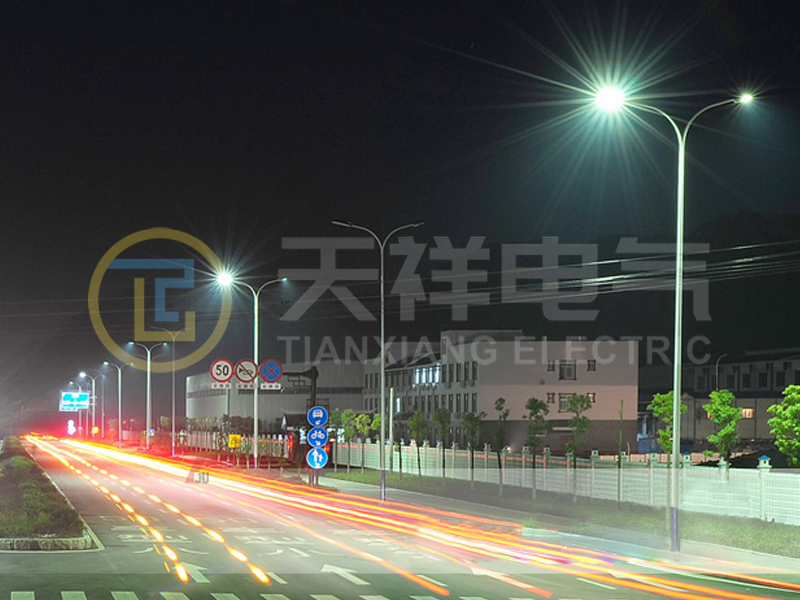Road lighting plays a vital role in ensuring the safety and efficiency of transportation systems. As cities expand in size and traffic volume increases, the need for effective road lighting becomes more apparent. This article takes an in-depth look at road lighting requirements, focusing on the quality and quantity of lighting required to create a safe and traffic-friendly environment for drivers, pedestrians and cyclists alike.
Importance of road lighting
Effective road lighting is crucial for many reasons. First and foremost, it improves visibility at night and in adverse weather conditions, reducing the likelihood of an accident. Poor road lighting can cause confusion, misjudgment and increase the risk of a collision. Additionally, adequate lighting helps improve the overall sense of safety for pedestrians and cyclists, encouraging more people to use these modes of transportation.
Road lighting quality
1. Lighting Level
The quality of road lighting mainly depends on the level of illumination provided. The Illuminating Engineering Society (IES) provides guidance on the minimum lighting levels required for different types of roads. For example, major highways may require higher lighting levels compared to residential streets. The key is to ensure adequate lighting so that drivers can clearly see obstacles, pedestrians and other vehicles.
2. Light Distribution Uniformity
Uniformity of light distribution is another important aspect of road lighting quality. Uneven lighting can create areas of excessive light and dark spots, causing visual discomfort and increasing the risk of accidents. A well-designed lighting system should provide consistent lighting levels across the entire road, minimizing glare and shadows. This uniformity helps the driver maintain a stable visual perception of the surrounding environment.
3. Color Rendering
The color temperature of road lighting can significantly affect visibility and safety. Lighting that closely resembles natural daylight (approximately 4000K to 5000K) is generally preferred as it enhances color rendering and allows the driver to better distinguish between different objects and surfaces. This is particularly important in urban areas where traffic signs, road markings and pedestrians need to be easily identifiable.
4. Glare Control
Glare can be a serious problem for drivers, especially when moving from dark to bright areas. Effective road lighting should minimize glare and reduce light splashing into the driver’s eyes by using fixtures that direct light downwards. This can be achieved through the use of shielding and correct placement of light poles.
Road lighting quantity
1. Light Fixture Spacing
The amount of road lighting is usually determined by the spacing of light fixtures along the road. Proper spacing is critical to achieving the desired lighting levels and uniformity. Factors such as light pole height, the type of lighting technology used and road width all affect optimal spacing. For example, LED lights, known for their efficiency and brightness, can allow for greater spacing than traditional sodium vapor lights.
2. Lighting Design Considerations
When designing a road lighting system, several factors must be considered to ensure adequate quantities. These include road type (e.g. arterial roads, feeder roads, local roads), traffic volumes and the presence of pedestrians and cyclists. A comprehensive lighting design should also consider the surrounding environment, including trees, buildings and other structures that may block light.
3. Adaptive Lighting Solution
As technology advances, adaptive lighting solutions are becoming increasingly popular. These systems can adjust the amount of light based on real-time conditions, such as traffic flow and weather. For example, during peak traffic hours, lighting can be enhanced, while during off-peak traffic periods, lighting can be dimmed to save energy. This not only improves safety but also contributes to sustainable development.
In conclusion
In summary, road lighting requirements include the quality and quantity of lighting provided. Quality factors such as lighting level, uniformity, color rendering and glare control are critical to creating a safe driving environment. At the same time, the amount of lighting is determined by fixture spacing and thoughtful design considerations, ensuring the roadway provides adequate illumination for all users.
As cities continue to grow and develop, the importance of effective road lighting cannot be overstated. By prioritizing quality and quantity in roadway lighting design, we can increase safety, improve traffic flow, and foster a sense of safety for all who travel on our roads. Investing in modern lighting solutions not only meets today’s pressing needs, but also paves the way for a safer, more sustainable future.
Post time: Nov-01-2024





